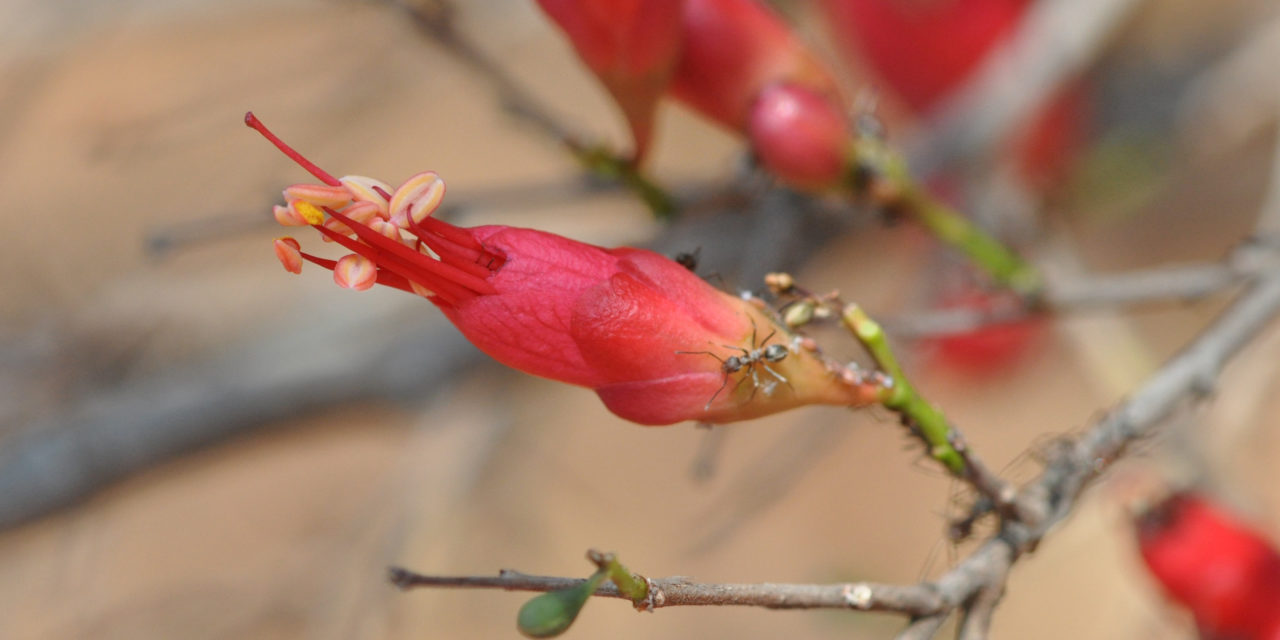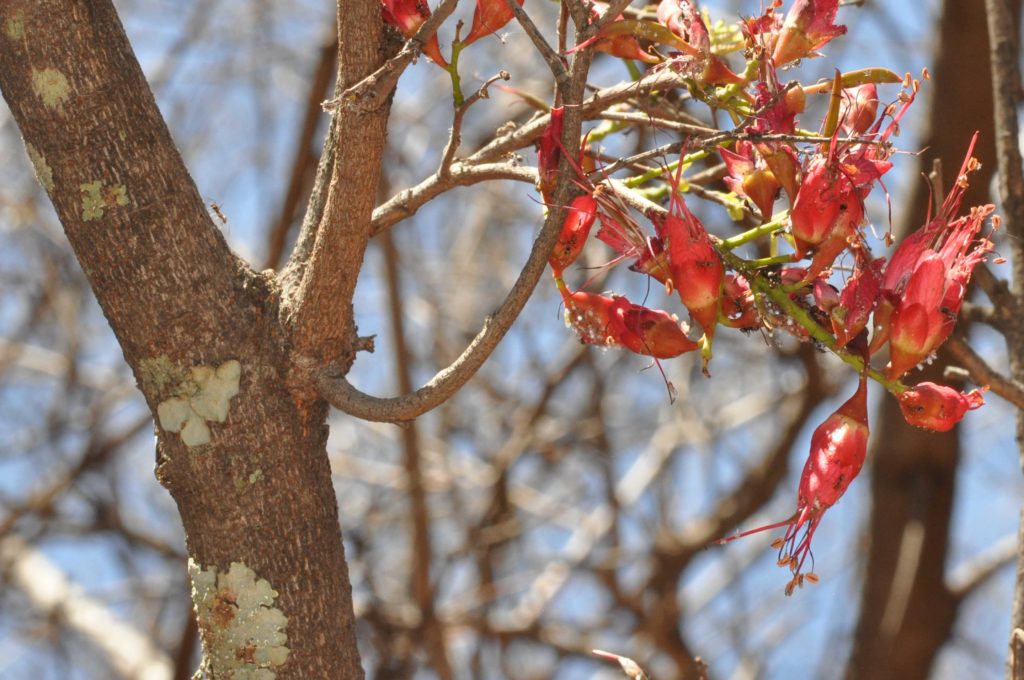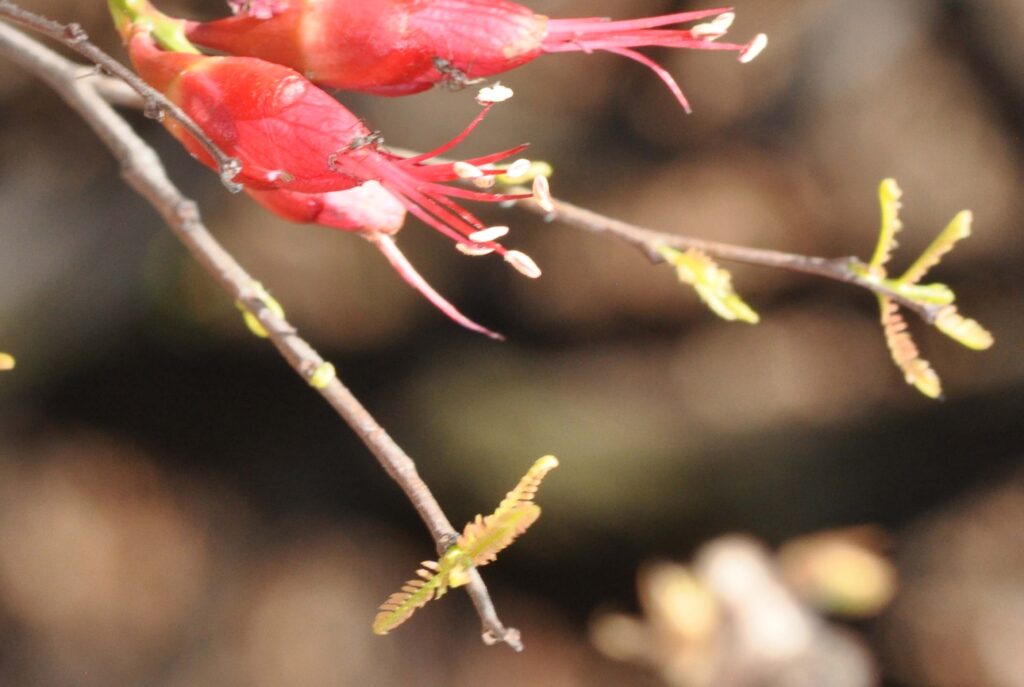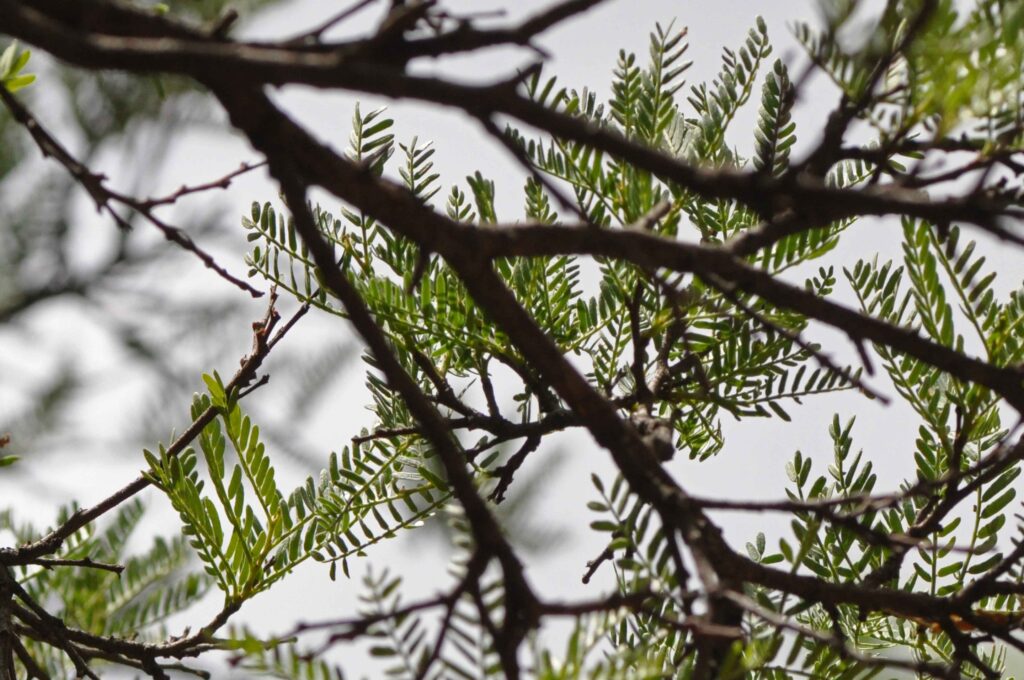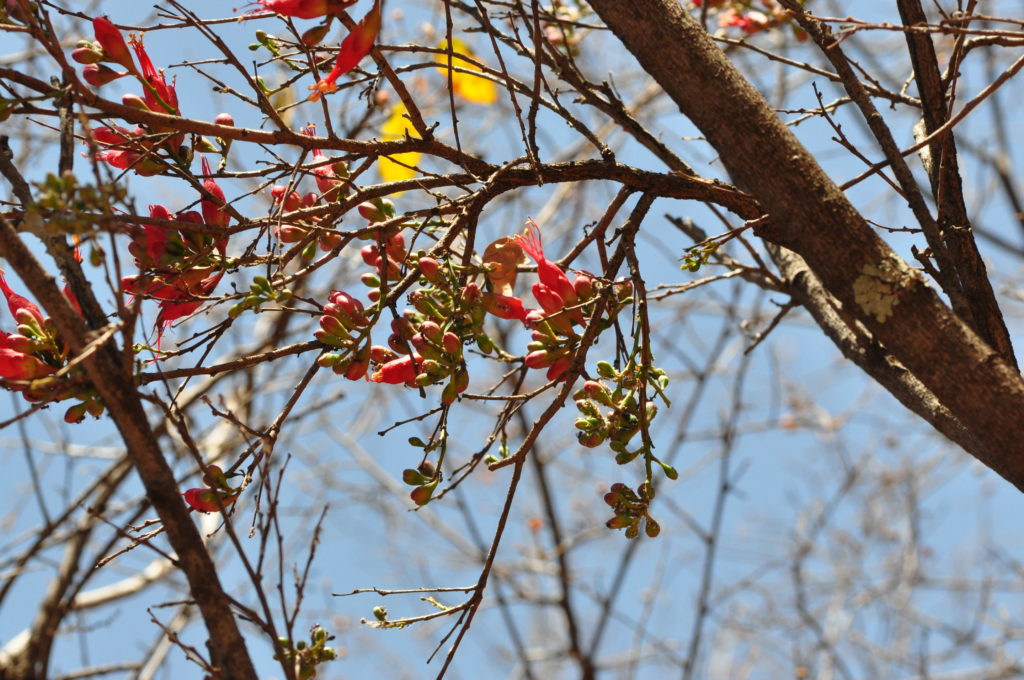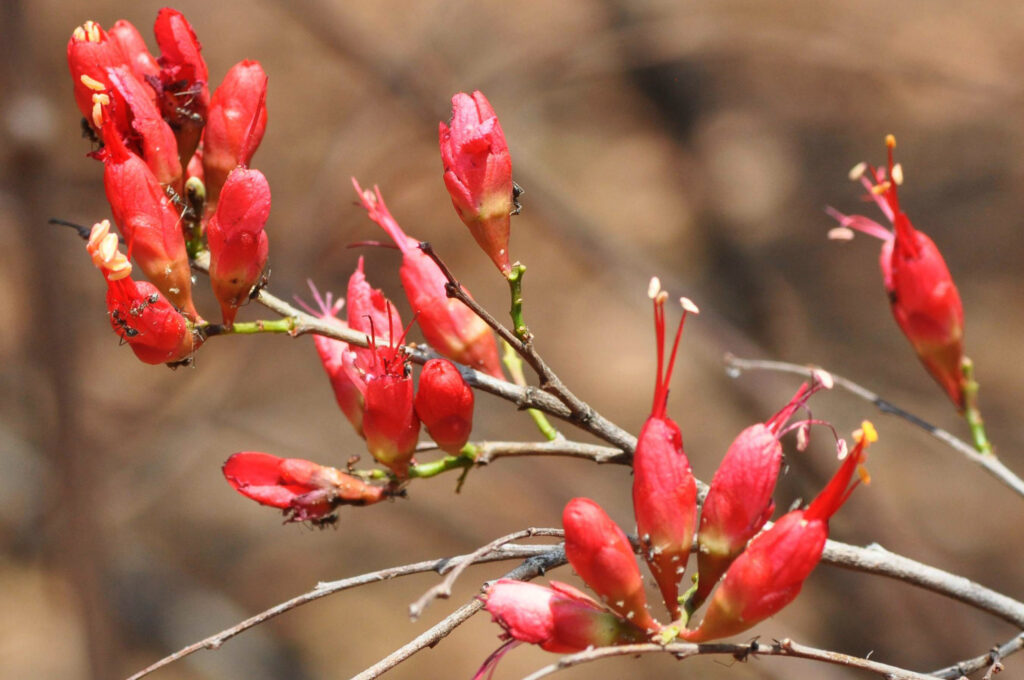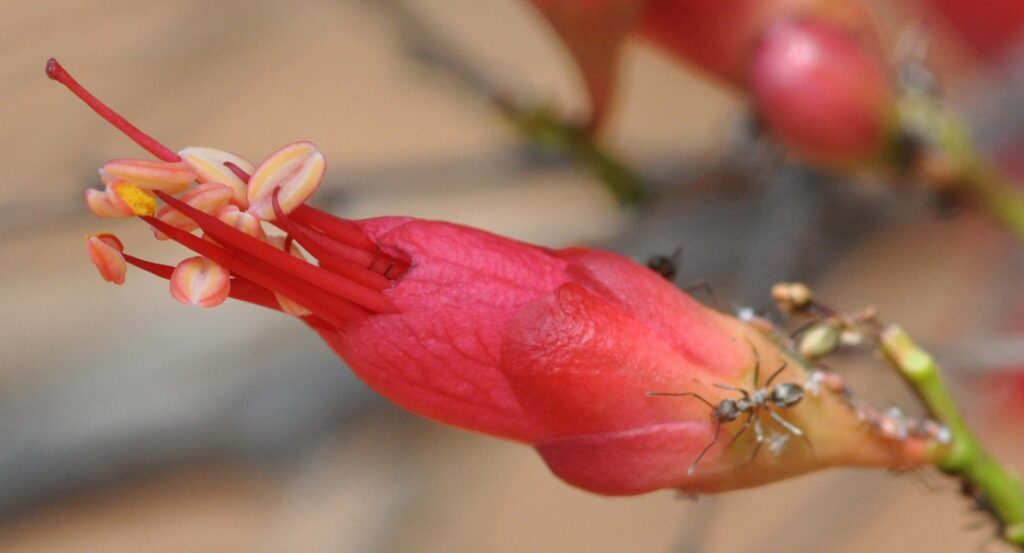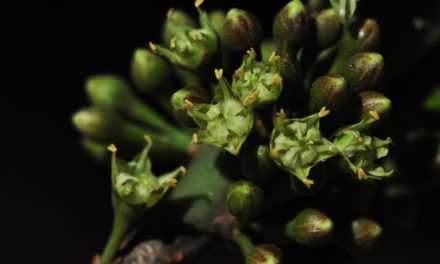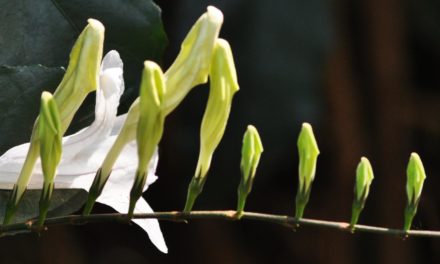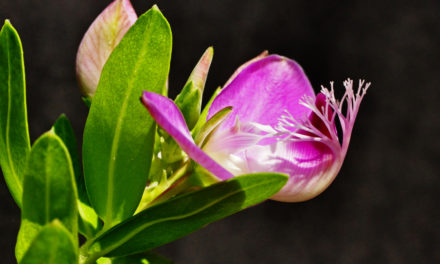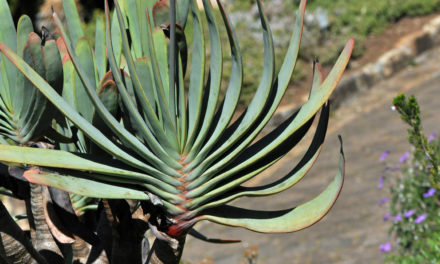General Info – summary
This plant is endemic in South Africa. The Tree may reach 6m high with rigid branches. Compound paripinnate and alternate Leaves are coriaceous. Attractive, bisexual, usually red and 5-merous Flowers in panicles and up to 5cm long. 10 red filaments surround the single pistil with a superior ovary with a red style & small stigma. Fruit: a short, explosively dehiscent pod + pale brown roundish seeds with no aril.
Description
Schotia afra var. afra
Previous Names: Guajacum afrum, Schotia angustifolia, Schotia parvifolia, Schotia speciose, Schotia speciosa var. tamarindifolia, Schotia tamarindifolia, Theodora speciosa.
SA Tree No. 201
Common names: (Afr) Boonenboom, Hotnotsboerboom, Hotnotsboerboontjieboom, Hotnotsboontjie, Karoo-boerboon, Karoohuilboerboon, Kleinboerboontjie. (Eng) Hottentot’s Bean, Karoo Boer-bean, Small Boer Bean. (isiXhosa) Umgxam, Umqongci, Intiza.
Family: Fabaceae, or Leguminosae (Pea, bean or legume family). After the Orchidaceae and the Asteraceae, the Fabaceae is the third largest Angiosperm (flowering plants) family with 700+ genera and close to 20 000 species. Local Tree genera on this website include Acacia (Vauchellia, Senegalia), Albizia, Bauhinia, Bolusanthus, Burkea, Calpurnia, Colophospermum, Cordyla, Cyclopia, Dichrostachys, Erythrina, Erythrophleum, Faidherbia, Indigofera, Mundulea, Peltophorum, Philenoptera, Piliostigma, Schotia and Xanthocercis. The Fabaceae are recognisable by their fruit and by their pinnately compound Leaves. Leaves may also be simple – even bilobed and usually have stipules – some of which may be spinescent. Leaflets are usually entire. Flowers are bisexual and bracteate. Regular flowers usually have 4-5 sepals and the same number of petals. Irregular flowers have 4-5 sepals and 5 or less petals. Stamens have anthers that have 2 pollen sacs and there are usually at least twice the number of stamens as petals – often 10. The superior Ovary has 1 locule containing 1 or more ovules. The Stigma and Style are simple. The single carpel develops into the Fruit, which is usually a pod. The mature pods may dehisce or break into segments. Seeds vary.
Name derivation: Schotia refers to Richard van der Schot (1730-1819): head gardener of the imperial gardens near Vienna. afra – from Africa. The southern Africa genus Schotia has 4 species. The other 3 are: S. brachypetala, S. capitata and S. latifolia.
Conservation: National Status: L C. (Least Concern). Assessment: 2005 (W. Foden and L. Potter). The population trend is stable.
Tree
This spineless small much branched shrub or slender Tree up to 6m high has many pale rigid branches. It may also be a shrub. The gnarled Trunk, has Bark that is dark brown (photo 157) or black and old thick stems may be cracked, fissured lengthwise – even twisted. The bark on the Twigs (1-year-old current branch segments) is smooth and grey. As the plant matures, the bark may become cracked and longitudinally fissured.
- 157R2. 2016/10/25. Pretoria NBG. Photo: David Becking.
Leaves
This almost evergreen tree has feathery Leaves that are coriaceous (leathery) and often crowded at the ends of short spur branches (photo 544). These alternate leaves are paripinnate (pinnately compound leaf ending in a pair of leaflets). Six to 11 pairs of Leaflets develop in each leaf – each up to 17 x 10mm. The Midrib (the main rib of a leaf or leaf-like part, a continuation of but excludes the petiole) may be slightly winged and it is along the midrib that the leaflets tend to fold. The Petiole (leaf stalk) is short – up to 4mm long and Petiolules (stalk of leaflets) are absent. Small Stipules (basal appendages of the petiole) are present. Each of the up to 18 pairs of relatively small Leaflets (up to 1,7 x 1cm) is dark green and may end with a spine. The Apex is rounded or broadly tapering and the asymmetric Base is rounded. The Margin is entire (with a continuous margin, not in any way indented).
- 158R. 2016/10/25. Pretoria NBG. Photo: David Becking.
- 544. 2016/11/15. Pretoria NBG. Photo: David Becking.
Flowers
The impressive individual Flowers are up to 2,5cm long. They occur all over the tree in almost spherical terminal Panicles (indeterminate, branched inflorescence with stalked flowers) and are usually on short spur branches. Each panicle is up to 8cm long and the flowers may be closely grouped together (photo 12). Each individual bisexual flower is usually bright red or less commonly pink. The Bracts (modified specialised leaves usually found with inflorescences and flowers) are easily detached and shed early. The Calyx has 4 imbricate (having regularly arranged, overlapping edges, as roof tiles) red lobes (photo 14) which persist in the fruit. The Corolla has 5 overlapping usually red or pink Petals. The 10 protruding Stamens have conspicuous red Filaments (photo 12) that are free from their base. The anthers have 2 pollen sacs (photo 14) that are versatile (hung or attached near the middle, and usually moving freely). Present is a single Pistil (a unit of the Gynoecium, the female element of the flower, composed of the Ovary, Style and Stigma). The superior Ovary contains 1 Locule (compartment within an organ) and many ovules. The ovary attaches to the calyx tube by means of a short stalk. From the ovary extends a single, red, terete (circular in cross-section) Style. This ends in a single, small headed Stigma (photo 14). Flowering time may be irregular. (Aug-Nov).
- 842. 2016/10/11. Pretoria NBG. Photo: David Becking.
- 12. 2016/10/18. Pretoria NBG. Photo: David Becking.
- 14. 2016/10/18. Pretoria NBG. Photo: David Becking.
Fruit
The short, oblong, woody Fruit is an explosively dehiscent Pod with a persistent Calyx. The initially attractive young pods are green, red and pink and up to 12 x 4cm. They contain a hard persistent rim that becomes woody and turns brown. Initially the remains of the style are visible. The pale brown, roundish, tan coloured Seeds lack a yellow Aril (an appendage or outer covering of a seed and may appear as a pulpy covering). A distinct aril is present in seeds of Schotia brachypetala. The light brown seeds develop from a stalk, the funiculus, connecting an ovule or a seed with the placenta. (Oct-Mar+).
Distribution & Ecology
This plant is a survivor and occurs in rocky semi desert regions including Karro bush and scrub. It occurs in the coastal areas of Western Cape and Eastern Cape. This plant is a South African Endemic (restricted to a particular geographic location). It often occurs along dry watercourses. The large quantity of Nectar produced runs down the side of the flower attracting insects, monkeys and birds – including the lesser double collared and the malachite sunbirds. This plant is more valuable to birds than to man. Herbivores browse the Leaves. The Brown Playboy (Deudorix antalus) is an example of a butterfly whose larvae feed on these and many other tree leaves. They are on the wing year-round – especially Sep-Oct and Mar-May. This drought resistant tree produces a greatly appreciated deep shade in the dry hot environment. This tree is less shrub like and has larger and fewer leaflets that are larger than Schotia afra var. angustifolia which occur in drier areas of the country including Namaqualand (an arid region of South Africa e.g. Augrabies falls and extends more than 1 000km northwards along the west coast into Namibia.
Ethnobotany
Although the Wood is hard and tough, its small, size reduces its usefulness. Historically felloes (the outer rim of wagon wheels to which spokes were attached) was made from this wood. Stock browse the Leaves. Because of the somewhat isolated position of some plants, they may appear spectacular when flowering. The pods are variously coloured and are themselves impressive. The partly green Seeds are edible. Since early times, including in the Stone Age, seeds have been eaten by people. They can ground into meal and roasted on a fire. Boiling will remove the astringent (slightly acidic or bitter) seed coat taste. Ground up seeds have been used as a coffee substitute. The Roots are non-invasive. Plants Grow well from seeds that usually germinate in about a week. Water regularly – especially in dry times,
References
Coates Palgrave, M. 2002. Keith Coates Palgrave Trees of Southern Africa, edn 3. Struik, Cape Town.
Foden, W. & Potter, L. 2005. Schotia afra (L.) Thunb. var. afra. National Assessment: Red List of South African Plants version 2020.1. Accessed on 2023/11/23.
Ginn P.J. Mcilleron W.G. and Milstein P. le S, 1989. The Complete Book of Southern African Birds. Struik, Cape Town.
Lawrence, G. H. M, 1951. Taxonomy of Vascular Plants, The Macmillan Company, New York. Tenth Printing 1965.
Palmer, E. & Pitman, N. 1972. Trees of southern Africa, Balkema, Amsterdam, Cape Town.
van Wyk, B. & van Wyk, P. 1997 Field guide to Trees of Southern Africa, Struik, Cape Town.
Woodhall, S. 2020. Field Guide to Butterflies of South Africa, edn 2. Donnelley, RR, China.
https://en.wikipedia.org/wiki/Deudorix_antalus

